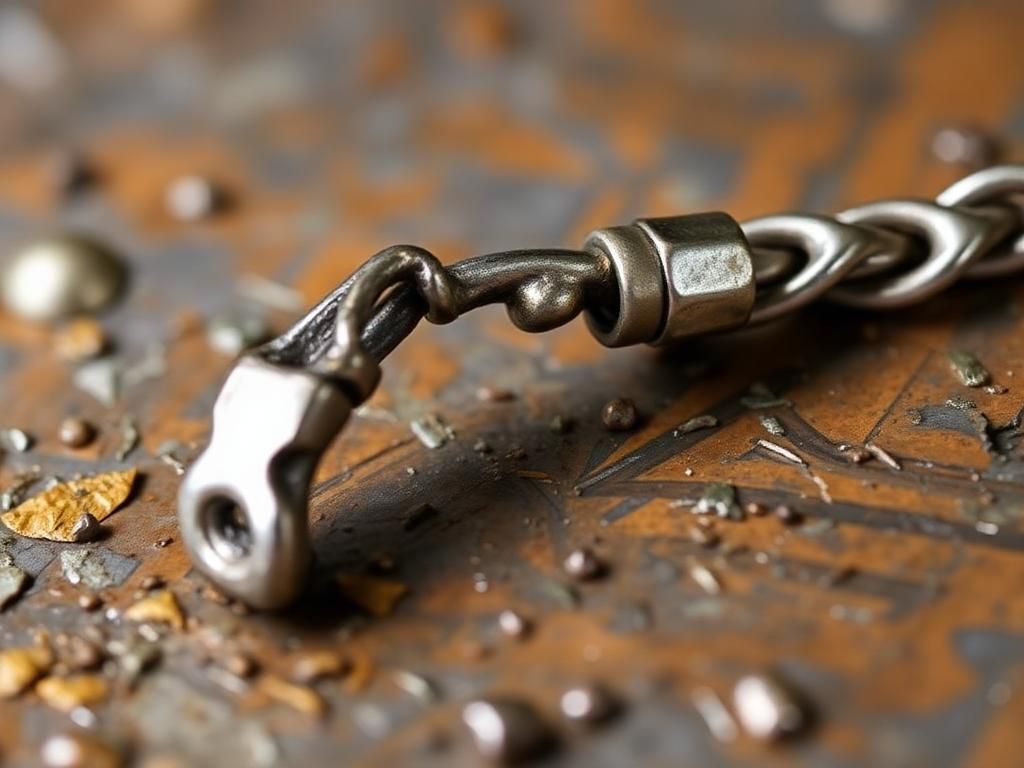Alloys are materials composed of two or more metals, expertly combined to create improved properties suitable for specific applications. The study of whether alloy metal tarnish is significant, as many metallic materials can change over time due to environmental conditions, affecting both their appearance and performance.
Definition of Alloy Metals
What Are Alloys?
In metallurgy, alloys are formed by combining metals and occasionally non-metals to enhance their characteristics. For instance, the addition of other elements can improve strength, ductility, corrosion resistance, and aesthetic appeal.
Common Types of Alloys
Some prevalent examples of alloys include:
- Bronze: primarily made of copper, often alloyed with tin or aluminum.
- Brass: a combination of copper and zinc, noted for its workability and resistance to corrosion.
- Stainless Steel: a steel alloy mixed with chromium and sometimes nickel to enhance its rust resistance.
Importance of Studying Tarnish
What is Tarnish?
Tarnish refers to the dull film that can develop on metals, particularly those containing copper or silver, due to chemical reactions with environmental factors. This change can impact the aesthetic appeal and longevity of alloyed metals.
Why Awarness Matters
Consumers interested in purchasing or maintaining alloy items should be aware of tarnishing since it can indicate a need for care or signal potential structural integrity issues over time.
Composition of Alloy Metals
Elements in Alloys
Different metals contribute uniquely to the tarnishing properties of alloys. For example, copper alloys like brass can tarnish easily due to their reactive nature. Conversely, stainless steel, with its chromium content, resists tarnishing.
Types of Alloys and Their Uses
Alloys serve various purposes:
- Structural Alloys: Such as steel, widely used in construction due to strength.
- Decorative Alloys: Like gold-plated brass, commonly found in jewelry.
- Specialty Alloys: Used in aerospace applications for lightweight and high-resistance materials.
Understanding Tarnishing
What is Tarnishing?
Tarnishing is a surface phenomenon characterized by a thin film formation on the metal surface due to exposure to elements like oxygen, moisture, and certain compounds. This film often carried a brownish or greenish hue, making an item appear old and lustless.
Factors That Influence Tarnishing
Several factors can influence the tarnishing of alloys:
- Environmental Factors: High humidity or exposure to pollutants can accelerate tarnishing.
- Chemical Factors: For instance, acids in sweat can react with alloy metals, leading to tarnish.
- Physical Factors: Abrasion and temperature fluctuations may also promote tarnishing.
Alloys That Tend to Tarnish
Common Alloys Prone to Tarnishing
Several alloys face tarnishing challenges:
- Brass: Known for its beautiful golden appearance, it tarnishes quickly, developing a dark patina.
- Bronze: Often used in sculptures, it develops a green patina over time due to oxidation.
- Sterling Silver: Different from pure silver, sterling is an alloy that tarnishes due to copper content.
Stainless Steel and Tarnish Resistance
With a composition of chromium, nickel, and iron, stainless steel exhibits remarkable resistance to tarnishing. The protective oxide layer formed on its surface prevents interactions that typically lead to tarnishing.
Prevention and Maintenance of Tarnishing
Care for Alloy Metals
Maintaining alloy metals is essential to prolong their life and appearance:
- Regularly clean the surface with a soft cloth to remove dust and sweat.
- Store alloy items in a low-humidity environment to reduce tarnishing potential.
Protective Coatings and Treatments
Protective coatings can help preserve alloy metals. Options include:
- Clear Lacquer: Provides a barrier against the environment, helping to resist tarnishing.
- Electropolishing: Enhances surface smoothness and reduces tarnishing effects.
How to Remove Tarnish from Alloy Metals
DIY Methods
Home techniques can effectively remove tarnish:
- Combine baking soda and water to form a paste. Rub gently on the tarnished area, then rinse.
- Use vinegar for soaking smaller items; it can dissolve tarnish effectively.
Professional Cleaning Services
In severe cases, consider hiring professionals:
- Services often offer ultrasonic cleaning, ensuring thorough tarnish removal.
- Costs vary but can generally range from $20 to $100 depending on item type and cleaning method.
Conclusion
Summary of Key Points
Tarnishing is a significant issue for various alloy metals. Brass, bronze, and sterling silver are particularly susceptible, while stainless steel is much less likely to tarnish. Regular maintenance and proper storage can significantly mitigate these effects.
Final Thoughts
Understanding how does alloy metal tarnish can help consumers make informed decisions. Maintaining alloy items will ensure their beauty and functionality for years to come.
| Alloy Type | Prone to Tarnishing? | Common Uses | Tarnishing Appearance |
|---|---|---|---|
| Brass | Yes | Jewelry, instruments | Dark patina |
| Bronze | Yes | Sculptures, coins | Green patina |
| Sterling Silver | Yes | Jewelry, cutlery | Greyish discoloration |
| Stainless Steel | No | Kitchenware, appliances | Shiny, lustrous |
Frequently Asked Questions
1. What causes alloy metal to tarnish?
Alloy metals tarnish due to exposure to oxygen, moisture, and chemicals that react with the metal surface.
2. How can I prevent tarnishing on my alloy jewelry?
Store your jewelry in a dry place and clean it regularly with a soft cloth.
3. Are there specific cleaning products for tarnished alloys?
Yes, look for metal cleaners specifically designed for brass, brass or silver.
4. Is it safe to use home remedies for tarnish removal?
Yes, common household items like baking soda and vinegar are safe for most alloys.
5. How often should I clean my alloy items?
Regular cleaning every few weeks is advisable, depending on usage and exposure to the elements.
6. Can tarnished alloys be restored to their original luster?
Yes, with proper cleaning techniques and sometimes professional help, tarnished items can often be restored.

